Gas supply checks
Going on a caravan holiday without full gas bottles? Don’t even think about it! After all, the gas ensures we can cook pasta or make breakfast eggs on the cooker (there are usually three rings on the hob in Dethleffs caravans). Our Dethleffs caravans feature Truma warm-air heating, and many other caravan models heat using gas. The air-conditioning is also powered by gas. So not only will it be uncomfortably cold in the caravan without a full gas bottle, you won’t be able to cook anything, either. What an unthinkable nightmare! This is also why it is so important to properly check the gas system in the caravan.
How to check it
Shut off all the gas shut-off valves and the main shut-off valve on the gas bottle before you set off, when leaving the vehicle and when the gas appliances are not in use. When refuelling, on ferries or in the garage, no appliance such as the heating or the fridge should be in use if it is run on a naked flame, as there is a risk of explosion here.
Next, check the gas pressure regulator and the flue pipes. Is everything working flawlessly and is there any damage? Also take a look at the vehicle documents and check how old your vehicle is, as the gas pressure regulator must be replaced after a certain period of time. As the vehicle owner, you are responsible for doing this.
How do I detect a defect and what do I do if I find one?
If you detect a defect in the gas system, for example you can smell gas or the appliances are consuming an excessive amount of gas, there is a risk of explosion. Please remain calm and keep a cool head. Shut off the main shut-off valve on the gas bottle immediately and open windows and doors to ventilate the vehicle. Under no circumstances should you smoke in or near the caravan or spark any other naked flames here. You also must not switch on any electric switches such as light switches, switches that lift or lower the bed, etc. You should also disconnect smartphones from the charging points in the caravan. Call the nearest specialist garage to discuss what to do next.
![[Translate to International:] Gasflaschen im Wohnmobil [Translate to International:] Gasflaschen im Dethleffs Wohnmobil](/fileadmin/_processed_/4/2/csm_Gasflasche__Klein__1cf1666fe6.jpg)
When should I go to a garage?
When it comes to issues with the gas system, going to a specialist garage is always advisable because there is a risk of explosion with incorrect operation. Especially if you find damage when performing your checks. You must also visit an authorised garage when your caravan’s gas system needs to be maintained, repaired or altered. According to German national regulations, it is also recommended that you have the gas system checked by an expert before you use it after an extended winter break. This also applies to unregistered vehicles! If you make changes to the gas system yourself, you must have them checked by an authorised garage.
Gas in the kitchen
Before you use the cooker (again) after not being in your caravan all winter, you should open the windows or skylight to provide sufficient ventilation. If there are several gas appliances in your caravan, a gas shut-off valve will be needed for each appliance. Shut off the respective gas shut-off valve when individual gas appliances are not in use. Then you can start a test run and fire up one of the rings on the hob. Please note that the safety pilots need to be closed within one minute of the gas flame being extinguished. You will hear it click here. You should check this functionality not just when clearing out your caravan, but at regular intervals throughout the season.
The built-in gas appliances in Dethleffs caravans are designed solely to be run on propane gas, butane gas or a mixture of the two. The gas pressure regulator and all built-in gas appliances are designed to be operated at a pressure of 30 mbar.
Gas system
Generally speaking, gas is a clean, low-cost energy solution with a high energy value. Propane gas can still be lit at -42 °C, whereas butane gas can be lit at just 0 °C. If temperatures drop below these values, the gas loses pressure. Butane gas is therefore not suitable for use in winter. You must do regular checks on the gas hose that connects to the gas bottle for cracks or porous areas and make sure it is tightly sealed. As previously mentioned, as the vehicle owner you must have the gas hose replaced at regular intervals. Please check the regulations in your country for further guidance.
Due to its function and design, the gas bottle locker is an open structure. Make sure that the forced ventilation mechanism, which is fitted as standard, is never covered or obstructed. Otherwise the used gas cannot be channelled off outside. The locker should therefore never be used as a storage space. The best course of action is to make sure the gas bottle locker cannot be accessed by anybody else, especially children. It can be locked for this purpose.
Stellen Sie sicher, dass das Haupt-Absperrventil an der Gasflasche immer zugänglich ist und schließen Sie nur gasbetriebene Geräte (z. B. Gasgrill) an, die für einen Gasdruck von 30 mbar ausgelegt sind. Das Abgasrohr muss an der Heizung und am Kamin dicht und fest angeschlossen sein und darf natürlich ebenfalls keine Beschädigungen aufweisen. Achten Sie darauf, dass Abgase ungehindert ins Freie austreten können und Frischluft ungehindert eintreten kann. Halten Sie deshalb die Abgaskamine und Ansaugöffnungen immer sauber und frei.
Please make sure that the main shut-off valve on the gas bottle is always accessible and only connect gas-operated appliances designed for a gas pressure of 30 mbar, for example a gas barbecue. The flue pipe must be leakproof and firmly connected to the heating and gas fire and must also not show any signs of damage. Make sure that flue gases can escape outside without obstructions and fresh air can get in without obstructions. To do this, always keep the gas fires and intake openings clean and clear.
The gas filters filter out residue, such as olefins, paraffins and other hydrocarbon compounds, from the gas system. The filter cartridges must be checked at regular intervals and replaced at least every 2 years. Please consult the manufacturer’s operating instructions here.
The gas pressure regulator
The gas pressure regulator reduces the gas bottle’s gas pressure to the gas appliances’ operating pressure. You can connect a non-adjustable gas pressure regulator with safety valve to the bottle’s valve. Make sure the screw connections on the gas pressure regulator have a left-hand thread. The gas pressure must be reduced to 30 mbar for gas-operated appliances.
Replacing gas bottles
How long can a full gas bottle actually last in a caravan? A full 11 kg gas bottle is enough to cook on a flame for roughly 3 days, to heat at full power for approximately 22 hours or to cool for around 25 days. On average, the heating consumes approx. 170 - 490 g/h, roughly 140 - 165 g/h is required for each ring on the hob and the fridge can happily run on around 18 g/h. If you need to replace the gas bottles in the caravan soon, a specialist garage can do this for you. If, however, you feel confident enough to do it yourself, be careful.
Neither you nor the people around you are allowed to smoke while the gas bottles are being replaced, and no naked flames should be lit. After replacing the gas bottles, check that gas is coming through to the connection points. To do this, spray the connection point with a leak detector spray (available from accessory suppliers). Open the external hatch for the gas bottle locker and connect the main shut-off valve to the gas bottle. Take note of the direction of the arrow! Now manually unscrew the gas pressure regulator and gas hose from the gas bottle (left-hand thread), loosen the fastening straps and remove the gas bottle. Place the full gas bottle in the gas bottle locker and reattach it using the fastening straps. Manually screw the gas pressure regulator and gas hose to the gas bottle (left-hand thread). There is a gas shut-off valve for each gas appliance in the vehicle. They are installed underneath the hob or near the gas appliances (e.g. in the storage bench).
External gas connection
Depending on the model, the external gas connection is at the rear or on the left or right side of the vehicle. Connect the external gas appliance to the connection point and open the gas shut-off valve. If the external gas connection is not used, always keep the gas shut-off valve closed. Only connect gas consumers with the correct adapter to the external gas connection. Only connect external gas consumers designed for an operating pressure of 30 mbar. Before you open the gas shut-off valve, make sure that no gas is escaping at the connection point once the appliance is connected. If the external gas connection is not sealed tight, gas will escape into the air. If this happens, close the gas shut-off valve and the main shut-off valve on the gas bottle immediately. Get an authorised garage to check the external gas connection. There should be no spark sources near the external gas connection while an external gas consumer is connected. Do not use the external gas connection to fill the gas bottles and please take note of the notices on the external gas connection.
Dethleffs DuoControl
DuoControl is an automatic switching system with a remote display for a two-bottle gas system. The DuoControl switching system automatically switches the gas supply from the primary bottle to the reserve bottle once the primary bottle is either empty or no longer operational. This allows the gas consumers to remain in operation. The DuoControl switching system is suitable for all commercial gas bottles from 3 kilos to 33 kilos. The DuoControl switching system has two operating modes: winter mode “On and heating” and summer mode “On”
Crash sensor
The crash sensor protects against unwanted gas discharge. The gas supply will be automatically interrupted in the event of an accident (with an impact speed of 15 km/h (9 mph) or more) or if the vehicle is on a very steep incline. If the crash sensor has been triggered, it must be manually reset. You can reset it by pressing and holding the reset button with a pen for several seconds. The living area heater must only be operated while driving if the vehicle is fitted with a crash sensor and suitable high-pressure hoses with a hose break guard. Please also note the provisions set out by the countries in which you plan to travel and the manufacturer’s operating instructions.
Book a gas safety check
What happens during a gas safety check? A qualified expert will conduct a gas system check and gas appliance checks. During a gas safety check, the gas system will be tested to ensure it is functional and leakproof. The gas system check may include a high pressure test, low pressure test and regulator check, while the gas appliance checks will examine the ventilation, safety controls, flue termination, flue flow and conduct a spillage/leakage test and working pressure check.
Gas bottle safety checklist:
- Only transport gas bottles in the gas bottle locker.
- Place gas bottles upright in the gas bottle locker.
- Secure gas bottles in place so that they cannot tilt or turn.
- If the gas bottles are not connected to the gas hose, make sure the protective cap is always attached.
- Close the main shut-off valve on the gas bottle before the gas pressure regulator or gas hose is removed from the gas bottle.
- Now manually connect the gas pressure regulator or gas hose to the gas bottle. Do not use tools.
- Use only specialised gas pressure regulators with a safety valve designed specifically for use in vehicles. Other gas pressure regulators are not permitted and will not be able to withstand the high strain.
- At temperatures below 5 °C, use a de-icer for gas pressure regulators (e.g. EisEx).
- Use only 11 kg or 5 kg gas bottles. Camping gas bottles with a built-in check valve (blue bottles that hold max. 2.5 to 3 kilos) may only be used with a safety valve in exceptional circumstances.
- Use the shortest possible hose lengths (max. 150 cm) for external gas bottles.
- Never block the floor ventilation openings beneath the gas bottles.
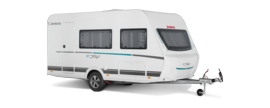
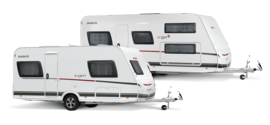
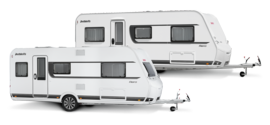
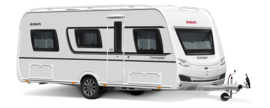
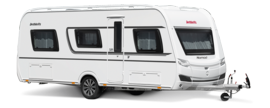
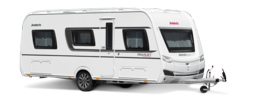
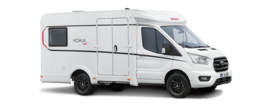
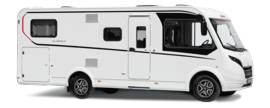
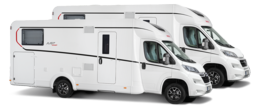
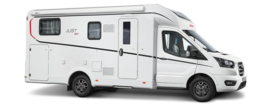
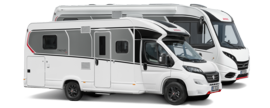
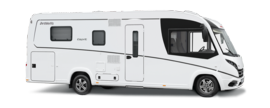
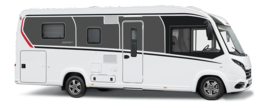
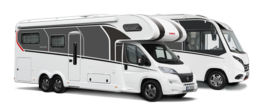
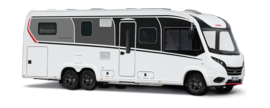
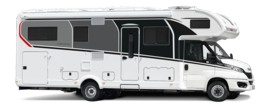
![[Translate to International:] Camping-Tipps für den Frühling im Dethleffs Wohnwagen [Translate to International:] Camping-Tipps für den Frühling im Dethleffs Wohnwagen](/fileadmin/templates/gfx/background/blank.gif)